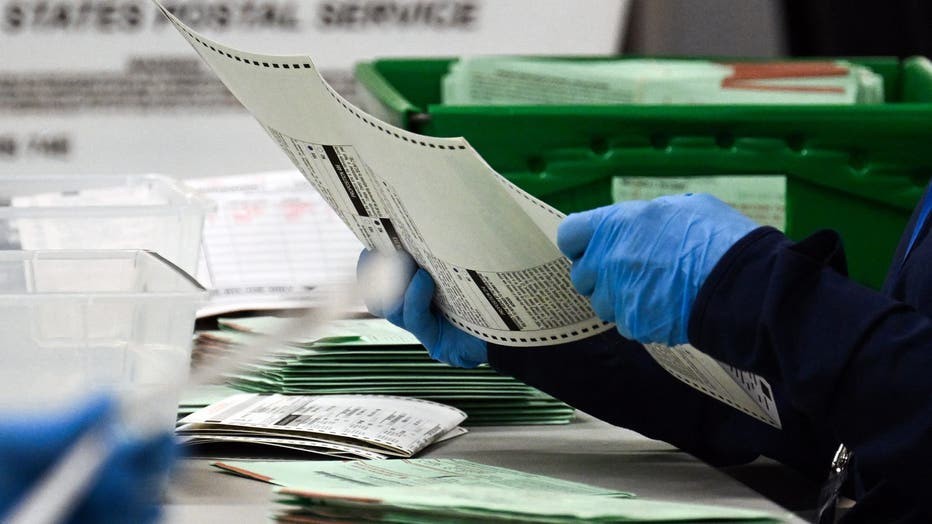Even after the presidential race has been called, many eyes remain on Arizona, one of the few states still processing ballots and yet to finalize results in several key races. The lingering question for many voters and observers is: Why Does Arizona Take So Long to count votes? This article delves into the primary factors contributing to the extended timeline for election results in the Grand Canyon State.
Key Factors Contributing to Arizona’s Ballot Counting Timeline
Several elements combine to make Arizona’s ballot counting process a more protracted affair compared to some other states. These can be broadly categorized into four main areas:
1. The Sheer Size of Maricopa County
Maricopa County is not only the largest county in Arizona but also the second-largest in the entire United States, only surpassed by Los Angeles County. While Los Angeles County leans heavily Democratic, Maricopa County is politically more balanced, often described as “purple.” This demographic reality translates to tighter election races, requiring a meticulous and thorough counting process to ensure accuracy in closely contested elections. The sheer volume of ballots from such a large and politically diverse population naturally extends the time needed for tabulation.
2. Lengthy Ballots and Detailed Verification
Arizona ballots, particularly in the 2024 election, were notably lengthy, spanning two pages. This extended ballot size inherently adds time to the processing. Election officials must verify that each ballot submitted is complete, containing both page one and page two. This crucial step, as Maricopa County Recorder Stephen Richer emphasized, is “important for the integrity of the process,” but it inevitably contributes to a longer overall timeline.
3. Arizona’s Voting Laws and Focus on Accuracy
Arizona’s election laws, while designed to ensure both convenience and accuracy, inadvertently contribute to a slower counting process. One significant factor is the handling of mail-in ballots, especially those dropped off late. Poll workers are required to account for and sometimes hand-count these late-arriving ballots at polling locations before they are transferred to central tabulation. This process, as Pinal County Recorder Dana Lewis explained, “does bog down the process a little bit.”
Mail-in ballots, a popular option in Arizona, require a more detailed process than in-person voting. Each mail ballot needs to be scanned, sorted, and undergo signature verification. Furthermore, Arizona law allows for a “cure” period of five days after Election Day for voters to rectify signature discrepancies or other issues identified by election officials. This provision, designed to ensure that eligible votes are not discarded due to minor errors, extends the timeframe for final result certification. Approximately one-fifth of Arizona voters returned mail ballots on Election Day in 2022, demonstrating the significant volume requiring this detailed verification process.
 Election workers inspect and count ballots at the Maricopa County Tabulation and Election Center in Phoenix, Arizona, during the 2024 election, highlighting the detailed process contributing to why Arizona takes longer to count votes.
Election workers inspect and count ballots at the Maricopa County Tabulation and Election Center in Phoenix, Arizona, during the 2024 election, highlighting the detailed process contributing to why Arizona takes longer to count votes.
4. Contrasting with States Like Florida: Prioritizing Speed
To understand why Arizona’s process takes longer, it’s helpful to compare it to states that report results more quickly, such as Florida. Florida’s election laws prioritize speed. For example, Florida mandates an earlier cut-off for early ballot drop-offs at polling places, ending on the Friday before Election Day. This restriction discourages late mail-in ballot returns. Crucially, Florida law also requires counties to complete the counting of early ballots by 7 p.m. on the day before Election Day.
This legal framework in Florida means that when polls close on Election Day, a significant portion of the vote count is already complete, allowing for rapid result announcements. In contrast, Arizona’s process is just beginning in earnest when polls close, as a substantial number of mail-in ballots, including those dropped off on Election Day, still need to be processed and verified.
Convenience vs. Speed: A Matter of Priorities
Ultimately, the pace of election result reporting reflects a state’s priorities. Arizona’s laws prioritize voter convenience, offering options like extensive mail-in voting and a cure period for ballots. These measures, while enhancing accessibility and accuracy, inherently extend the time required for ballot counting. States like Florida, by prioritizing speed, have implemented different laws that expedite the counting process, potentially at the cost of some voter convenience in ballot submission timelines. As voters consider the balance between convenience and速报 speed in elections, understanding these differing priorities is crucial.